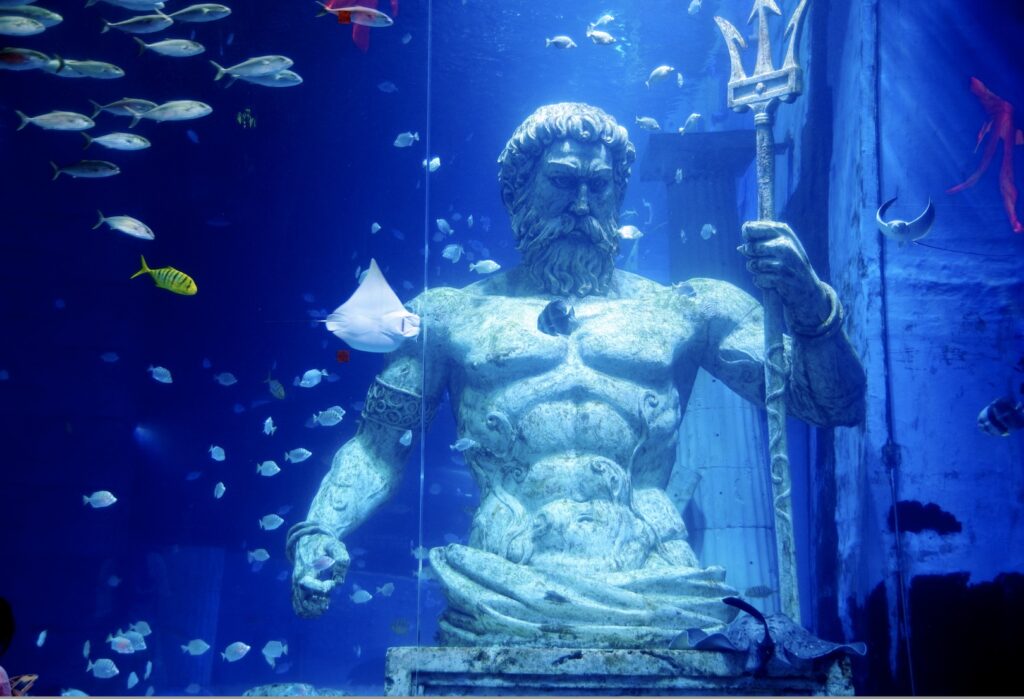Why are Some Myths Set in Real Places?

Why are Some Myths Set in Real Places?
Myths are powerful narratives that have shaped cultures and civilizations throughout history. They often blend fantastical elements with moral lessons, cultural values, and historical insights. A fascinating aspect of many myths is their connection to real-world locations. By setting these stories in familiar places, myths gain a sense of reality and relevance that resonates deeply with audiences. This connection between the mythical and the real world is not accidental; it serves several important purposes. From creating a sense of believability to preserving cultural identity and encouraging exploration, the use of real places in myths enhances their impact and significance.
In this exploration, we will explore the seven key reasons why myths are often anchored in real locations, illustrating how this practice enriches the narrative and cultural value of these timeless stories.
Reasons Why are Some Myths Set in Real Places?
Here are seven key reasons why myths are set in real places:
- Creating Believability: Real locations make myths more believable and relatable.
- Enhancing Cultural Identity: They strengthen cultural pride and heritage.
- Attracting Tourism: These places often become popular tourist destinations.
- Preserving History: Myths help preserve and commemorate historical events.
- Conveying Moral Lessons: Real settings enhance the impact of moral teachings.
- Inspiring Awe: Unique locations amplify the mysterious and supernatural elements.
- Encouraging Exploration: Myths linked to real places inspire exploration and discovery.
1. Creating a Sense of Reality

Myths are often set in real places to create a sense of reality and believability. When a story takes place in a recognizable location, it becomes easier for people to connect with and imagine the events described. This grounding in reality helps bridge the gap between the mythical and the everyday. For example, the myth of Atlantis is frequently linked to the Mediterranean Sea or the island of Santorini, adding a layer of realism to the story. By associating the myth with a tangible place, storytellers can make fantastical elements seem more plausible, allowing listeners to suspend disbelief and engage more deeply with the narrative.
This sense of reality is crucial for the impact of the myth. When the setting is real, the story’s lessons or messages can feel more immediate and relevant. Consider the story of the Loch Ness Monster, set in the real Loch Ness in Scotland. The existence of the actual lake lends credence to the legend, enticing people to believe and even visit the site in search of the mythical creature. This blend of myth and reality not only captivates the imagination but also creates a lasting impression on cultural consciousness.
2. Enhancing Cultural Identity
Real places in myths often play a significant role in enhancing cultural identity and pride. These settings can become symbols of national or regional heritage, embodying the values and stories of a community. For instance, the ancient city of Troy, associated with the Trojan War myth, is an actual archaeological site in modern-day Turkey. The association with this real place enriches the myth’s cultural significance, making it a source of pride and identity for people in the region. It becomes more than just a story; it becomes a part of the collective memory and cultural heritage.
This cultural significance can extend beyond the local community. Myths set in real places often become emblematic of broader cultural narratives, influencing how people understand history and identity. For example, the legend of El Dorado, the mythical city of gold, is tied to real explorations in South America. This myth not only shaped perceptions of the continent’s history but also influenced global views on exploration, wealth, and the unknown. By connecting myths to real places, cultures can assert their historical importance and contribute to a shared global narrative.
3. Attracting Pilgrimage and Tourism
Another reason myths are set in real places is to attract pilgrimage and tourism, often turning these sites into significant cultural landmarks. When a myth is linked to a specific location, it can draw visitors eager to experience the place where the story is said to have occurred. Mount Olympus, believed to be the home of the Greek gods, is a prime example. This mountain in Greece is not only a real geographical feature but also a major tourist attraction, thanks to its mythical associations. Visitors come to connect with the myth, explore the cultural history, and experience the setting of the legendary tales.
The tourism generated by these mythical associations can have substantial economic and cultural benefits. It helps preserve the sites, promotes cultural exchange, and fosters a deeper understanding of the myth’s cultural context. For example, the city of Cusco in Peru, linked to the Incan myth of creation, attracts thousands of tourists each year. These visitors not only explore the ancient Incan ruins but also engage with the rich mythology and history of the region. This interaction between myth and tourism helps keep cultural traditions alive and relevant in the modern world.
4. Preserving Historical Events
Setting myths in real places also serves the purpose of preserving historical events and figures. While the stories themselves may be embellished or fictionalized, the association with real locations helps keep the memory of actual events alive. The legend of King Arthur is a perfect example, often linked to places like Tintagel Castle in Cornwall, England. While the historical accuracy of King Arthur is debated, the real locations associated with his legend help preserve the cultural and historical significance of the narrative. These places become living memorials, keeping the story and its lessons relevant.
This preservation of history through myth can provide valuable insights into the cultural values and beliefs of the time. Myths often encapsulate the collective memory of a society, reflecting how they understood and interpreted historical events. For instance, the myth of Romulus and Remus, linked to the founding of Rome, is set in real places such as the Palatine Hill. While the story is mythical, the real settings help preserve the memory of Rome’s origins, blending history with legend. This mix of myth and reality provides a richer, more nuanced understanding of cultural history.
5. Providing Moral and Ethical Lessons
Myths often convey moral and ethical lessons, and setting them in real places can make these lessons more impactful. By anchoring the story in a familiar location, the moral teachings can feel more immediate and applicable to everyday life. The story of Sodom and Gomorrah, set near the Dead Sea, is an example of this. The real setting reinforces the story’s message about morality and divine justice, making it a powerful cautionary tale. The physical reality of the location serves as a reminder of the consequences described in the myth.
These moral lessons are often integral to the cultural and religious teachings of a society. By associating myths with real places, these lessons are reinforced and made more accessible. The tale of the Minotaur, set in the labyrinth of Knossos on the island of Crete, is another example. The real archaeological site lends credence to the story’s themes of bravery, cunning, and the triumph of good over evil. By grounding these lessons in real places, myths can effectively communicate important values and ethics across generations.
6. Inspiring Awe and Mystery
Real places with unique or mysterious characteristics can enhance the mythical elements of a story, inspiring awe and fascination. These settings can amplify the supernatural aspects of a myth, making the story more intriguing and memorable. The Bermuda Triangle, a real and enigmatic area in the Atlantic Ocean, is famous for stories of mysterious disappearances. The real geographical peculiarities of the region lend credibility to the myth, making the stories more compelling. This connection between the real and the mythical fuels the imagination and keeps the myth alive.
Such places often become symbols of the unknown and unexplained, capturing the curiosity and wonder of people. They serve as reminders of the mysteries that still exist in the world, beyond our current understanding. For example, the myth of the Fountain of Youth, often associated with real locations like St. Augustine in Florida, inspires thoughts of eternal youth and the quest for the impossible. These myths, set in real yet mysterious places, invite people to explore the boundaries between reality and imagination, keeping the spirit of adventure alive.
7. Encouraging Exploration and Discovery
Finally, myths set in real places can encourage exploration and discovery, both physically and intellectually. The promise of discovering something legendary or mythical can drive people to explore new regions or delve into historical research. The myth of El Dorado, the legendary city of gold, spurred many expeditions into uncharted parts of South America. While the city itself remains a myth, these explorations led to significant geographical and cultural discoveries. The myth inspired real-world actions, showcasing the powerful influence of storytelling.
This drive for exploration can also lead to a deeper understanding of the world and its cultures. Myths tied to real places often provoke interest in the history, traditions, and beliefs of the people associated with those locations. The search for the Holy Grail, linked to various real sites across Europe, has inspired countless quests and scholarly investigations. While the mythic object may never be found, the search itself has uncovered a wealth of historical and cultural knowledge. Thus, myths set in real places can inspire a lifelong journey of learning and discovery.
In conclusion, myths are often set in real places to create a sense of reality, enhance cultural identity, attract tourism, preserve history, convey moral lessons, inspire awe, and encourage exploration. These connections enrich the stories and their impact, making them an enduring part of our cultural heritage!
